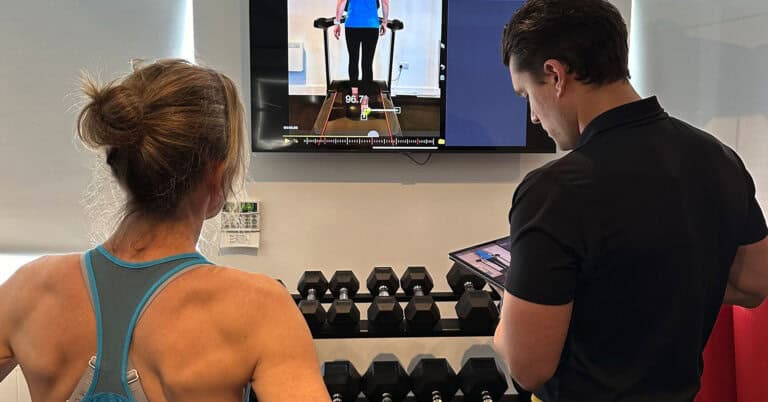After reading the title, you might be asking yourself, “can stretching too much really be a bad thing?”
The answer is not so simple, and like most things in life: it depends. Stretching has been long associated with improved flexibility, but many people do not stretch and surprisingly are more flexible than the average person. The converse is also true, since there are those who seemingly stretch all the time and remain stiff. Stretching impacts not only the muscles of the body, but also the skin, cardiovascular system, nervous system, and joints. With a variety of systems involved in any particular stretch, it is difficult to provide clear advice on such a question, but one thing is certain about biological systems, they always seek to be balanced and “normal”.

Normal Is Different For Everyone
“Normal” is in quotes because “normal” for one person may be abnormal for another. Performing certain stretches for one body may be beneficial (even life changing), but those same stretches may in fact cause another body to become “abnormal” or even injured. As a health professional, we have a set of values for what we consider to be a normal range for a particular mobility, or range of motion test, but it takes a professional with the necessary expertise to determine whether or not a particular person should aspire to fall within a particular range for a particular test, or not. This is why the goal for any stretching or mobility program should entail a professional assessment that is holistic, individual and balanced in nature.

I am often asked, “what is the best stretch for low back pain?”, and it is a good question, because mobility in the right area can resolve lower back pain for one patient, but the same stretch may in fact increase that individual’s lower back pain, or worse, cause an injury. I avoid recommending any specific exercise or stretch to any person without performing an exam first. Asking such a question about the “best stretch” for low back pain, might be similar to asking a financial advisor which stocks will balance any given financial portfolio because the answer is always: it depends. The human body, like the stock market, is a complex, dynamic, multi-system, and can be unpredictable in nature. ‘Buying stock’ in any particular stretch is only good if that is what your body needs to restore balance to your own individual “health portfolio”.
What’s The Verdict?
What then is the verdict; is stretching your best friend, or worst enemy? The answer is, stretching can be restorative for lost range of motion, but it can also create instability and cause imbalance. How stretching can cause instability is a difficult concept for many who have long understood stretching to be only a “good thing”. While stretching can even feel good at the time, and even provide a sense of relief that lasts several hours, it can also cause instability to a given joint or body region. Our brain and spinal cord use special sensors in muscles, skin, joints, and bone to understand where our body is in space and tipping the scale in the right or wrong direction can lead to vast improvements or impaired movements.
A Quick Self-Assessment You Can Try
The self-assessment seen below is for the hip, which is modified and simplified for the purpose of this article, and can help you begin to understand more about the potential needs your hip may have*:
- Can you cross your legs? Give yourself 3/3 if, while sitting in a chair, you can place your heel onto your opposite knee and sit cross legged without using your arms for help. Score 2/3 if you struggle or need your hands for help, 1/3 if you cannot perform, and 0/3 if you have pain during this movement.
- Can you stand with locked straight knees, feet together, and touch your fingertips to your toes? This is a common test for hamstring flexibility, so give yourself a 3/3 if you performed this with ease. 2/3 if you are within 1-2 inches of your toes, 1/3 if you are greater than 3 inches of your toes, 0/3 if you cannot reach that far, or you have any pain.
- Can you hold your ankle behind your body and approximate your ankle to your buttocks, while maintaining a neutral lower back curve and while putting both knees together? Give yourself 3/3 if you can perform this with ease, 2/3 if you can get your ankle within a few inches of your hip, and your knees are within an inch of each other, 1/3 if you have to extend your lower back to accomplish this, or you cannot grab your ankle without assistance, or cannot meet any criteria for a 2/3. Give yourself 0/3 if there is any pain, or you cannot hold your ankle. (Modification: This test can be performed laying on your side or standing)
What Did You Score?
If you scored 9/9 on these tests, stretching may be fruitless for you on regular daily basis, with potentially good benefits on an intermittent basis. Perhaps a focus on strengthening and stability would be best.
If you scored a 2/3 on any test, this is a grey area that could benefit from a focused mobility program, but could also benefit from designing more mobility into the exercises that you already perform, as would any good exercise regime.
If you scored 0/3 or 1/3 for any test, you should seek a professional opinion from someone who would take a holistic approach to your health history and advise on what stretching and/or strengthening you may need, especially if there is any pain or prior injury involved.

If you are concerned about your mobility or any aches and pains, speak to our team today! We offer free discovery consultations with no obligation to book treatment. Head over to our online booking system to book one today.
*(This does not constitute as medical advice, and physical testing has an inherent risk of injury, proceed at your own risk. Do not attempt these assessments without consulting a professional if you are unwell or have concern about the potential for injury.)


